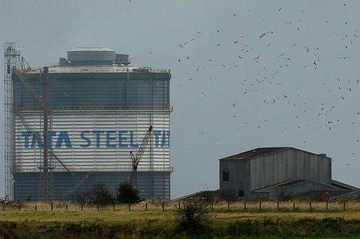 Home > News
Home > News



By making it mandatory to use domestic steel products must for all government projects, the government's National Steel Policy 2017 is being protectionist though stakeholders differ on whether to sneer at such protectionism.
The government's move is a bid to boost local production and protect the domestic steel industry from global headwinds. The latest move comes along with price protectionism through several duties to curb cheap imports.
However, one thing is clear – making and then enhancing the quantum of local sourcing in government contracts will only gain popularity as several industries remain export-laggards and seek the government's intervention in keeping their heads above water.
The statement by the government says the new policy mandates to provide preference to domestically manufactured iron and steel products (DM1&SP) in government procurement. The policy is applicable on all government tenders where price bid is yet to be opened. It further says that DMI&SP policy provides a minimum value addition of 15 percent in notified steel products which are covered under preferential procurement.
The preference for local players comes after similar measures in telecom and solar power industries have faced international scrutiny, The Times of Indiareport says. It also says a policy is in the works for providing preference in government procurement for several other locally-manufactured goods.
It is clear that India has adopted an increasingly protectionist attitude against steel tyrants like China and Russia who were earlier dumping low priced steel, and the government intends to continue hand holding the domestic industry for several years more. Is this protectionist attitude wrong? Most industry players and even independent observers obviously feel there is little wrong in protecting domestic industry against global headwinds. They believe the industry’s survival and now revival depends on the government providing it price support besides also shielding domestic steel production from global pressures. Protectionism obviously begets admirers.
But despite all the protectionism, domestic steel demand may not rise as per projections. A Mumbai-based brokerage said in a note to clients that “Steel imports have already declined sharply due to protectionist measures and now account for only 8-9 percent of domestic steel demand. Then, most of the steel for the public sector is already sourced from domestic steel companies.... Large proportion of infra steel demand would be driven by long products. Long product imports account for around 10 percent of steel imports and less than 1 percent of domestic steel demand. Value added steel products (like higher grade CR, GS) produced from imported substrates (HRC, slabs) could also qualify as domestic steel as per the value addition criteria. We also see implementation issues.”
Besides making it mandatory for government departments to buy steel locally, the policy has also set some ambitious targets for production and consumption. We want to more than double production to 300 million tonnes by 2030 from just 124 million tonnes now, which means additional investment of Rs 10 lakh crore until 2030-31. The policy also seeks to increase per capita consumption to 160 kg by 2030 from existing level of around 60 Kg.
The brokerage quoted earlier said these lofty targets were difficult to achieve. “This (hike in capacity to 300 mt) implies capacity CAGR of 6.5 percent over FY17-31 (8 percent CAGR over FY 03-17). We highlight that existing government policy already envisaged steel capacity target of 300mn tons by 2025, but this has now been shifted to 2030-31....Capacity targets are ambitious, in our view. Capacity expansion in the past has been largely driven by brownfield expansion. While we see scope for more brownfield expansions in the next 3-5 years, greenfield expansions would be needed for meeting government's capacity target, in our view. This in our view, could be challenging. Government would need to address key hurdles around raw material supply and land acquisition.” So not only is the production hike target ambitious, it has anyway been pushed back by five years and ignores the fact that even today, despite all protectionism from the government, industry is able to use only about 80 percent of installed capacity!
Sanak Mishra, Secretary General of the Indian Steel Association, dismissed the term ‘protectionist’ saying the government is not directly intervening in the industry but is merely boosting sustainability. “India continues to be a growth story in consumption – internationally, per capita consumption of steel is 220 kg per annum versus just 60-63 kg per capita per annum in India. As we rapidly urbanise, India needs large amounts of steel in infra and construction sectors....Our projections are consumption will grow 6 percent in current fiscal and 7 percent in 2018-19 versus just 4 percent in FY16”.
Perhaps the answer to the steel conundrum lies in keeping achievable production, consumption targets while gradually raising the competitiveness of the domestic industry so that it can compete with global peers. Because protectionist policies may not last forever.
XINSTEETL NEWS